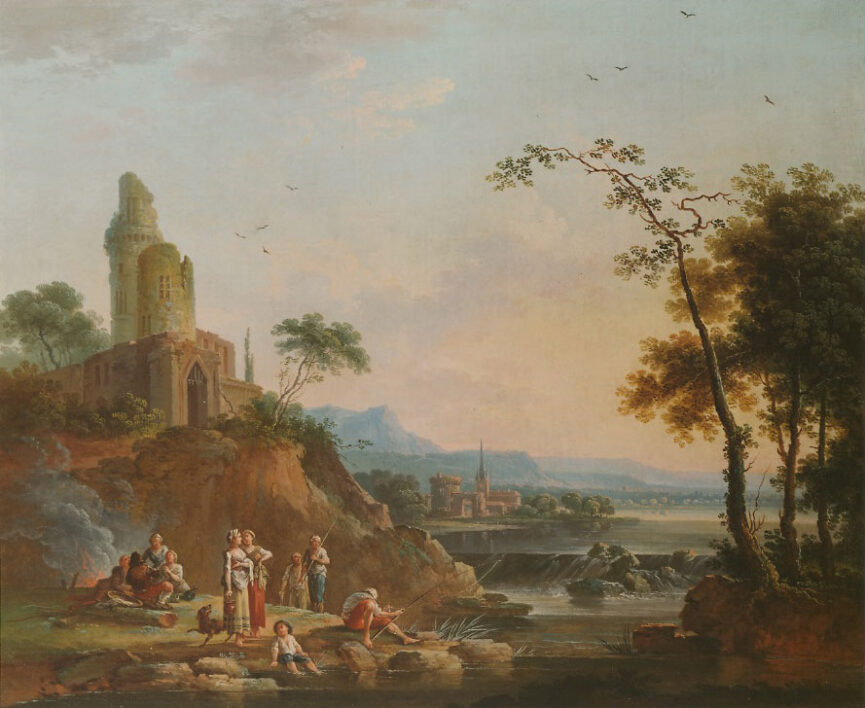Jean-Baptiste Claudot de Nancy
Badonviller 1733 - Nancy 1805A Landscape with fishermen and figures beside a cascade in a river, a ruined Gothic tower on a hill and a village with a church in the distance
Oil on canvas: 36 1/4 x 43 1/4 in. 92 x 109 cm.
Provenance: Literature on the artist: C.G.Marcus Jean Baptiste Claudot peintre de Nancy (1733-1805), Paris, 1970
Claudot started his career at Blamont and Luneville, before moving to Nancy in 1759, where he helped to decorate churches under the tutelage of Jean Girardet and Charles Joly. In 1766 the death of Stanislaus, Duke of Lorrain and ex-king of Poland, whose court was based at Nancy, ended royal patronage in that city and Claudot moved to Paris. It was here that he struck up a friendship with Joseph Vernet, in whose studio he worked and who clearly influenced his landscape style. Despite growing success in Vernet’s orbit, Claudot returned to Nancy in 1769 and resumed the decoration of churches and public buildings. Having absorbed significant lessons from Vernet, however, he also continued to execute charming and luminous landscapes inspired by the scenery around his home. Several of these juxtapose calm and stormy scenes, looking forward to the romantic interest in the sturm und drang effects of nature, or those moods expressed as sublime, terrible or picturesque in English literature and painting of the period. It is interesting to note the artist’s interest in the Gothic elements of the castle, which present a change from the general taste for classical architecture prevalent in earlier capriccios of the 18th.century, and anticipate the taste for the romantic in French early 19th.century painting.
Claudot ranks with Jean-Baptiste Lallemand and Pierre Demachy as one of the most accomplished painters in the Vernet orbit working in a late rococo idiom. His work is well represented in the Musee des Beaux-Arts and the Musee Historique Lorrain in Nancy.

